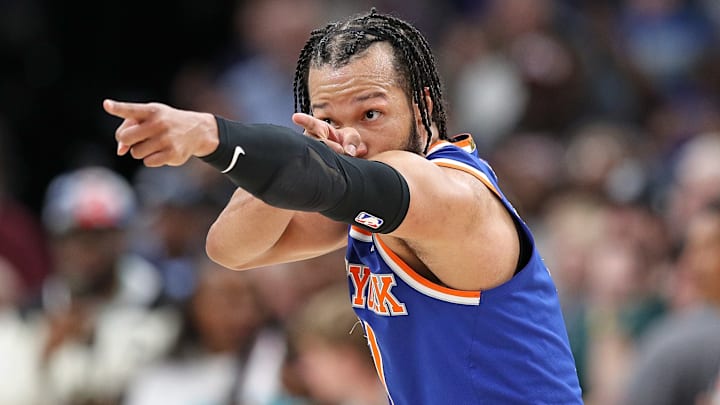Jalen Brunson did the New York Knicks a massive favor in the summer of 2024 when he signed a four-year, $156.5 million extension. One year later, as salary-cap projections shrink and Mikal Bridges' future remains unresolved, his decision to forgo 2025 free agency isn't just team-friendly. It has become a necessity.
The raw terms of Brunson’s extension were always an incredible gift for New York. If he reached free agency this summer, he could have signed a four-year, $207.8 million max the Knicks absolutely would have offered him. That $51.3 million difference amounts to a roughly $12.8 million discount per season.
This is an even bigger deal now that the salary cap may not rise as dramatically as many expected—and with retaining Bridges potentially more expensive than many assumed.
Latest salary-cap projections will have a massive impact on the Knicks
Teams have been operating under the assumption there would be 10 percent cap increases each year. But 2026-27 projections have it rising by only 7 percent.
That doesn’t sound like a huge deal. And yet, it’s already impacting how teams go about their business this offseason. This makes sense when you do the math.
A 10 percent increase from the current salary cap comes out to $170.1 million. Projections for 2026-27 are now around $165.4 million. Lowering the forecast by nearly $5 million has huge implications on squads toeing fine lines.
The Knicks are one of them. Look no further than their current proximity beneath the second apron, which could be fewer than $4 million, or how they needed to convince Guerschon Yabusele to sign for less money.
This discrepancy will only grow. Skip ahead to 2027-28, and the Knicks were banking on the cap checking in around $187.1 million. Forecasts now have it settling in at $177.1 million. That’s a $10 million haircut.
Mikal Bridges’ future could become a problem
Bridges became eligible to sign a four-year, $156.2 million extension immediately after the NBA Finals. Plenty of different reasons could contribute to the absence of an agreement so far, but there’s no debate over whether the Knicks should offer him the full freight. They should.
They must.
As things stand, New York will be right around the second apron next year if Bridges signs a max extension that nets him a $34.9 million salary for 2026-27. That’s without factoring in a new deal for Mitchell Robinson.
Ducking the second apron could prove impossible even under those circumstances. They are hopeless if Bridges heads into free agency, where a four-year max contract would run over $222 million, putting him on the books in 2026-27 for $49.6 million instead of $34.9 million—a difference of $15 million.
If you don’t think that kind of offer will exist for him, well, think again.
More teams are projected to have cap flexibility next summer. And while the list of free agents is pretty glitzy at the top, the vast majority of them will sign extensions, pick up player options, or just generally stay put. Bridges has a real shot at becoming the best available free agent.
A four-year max offer from another team (which clocks in at $213.5 million) will be out there. And just like with OG Anunoby in 2024, the market could force New York to come over the top with a fifth year.
There is no overstating Jalen Brunson’s sacrifice
Keeping this team together would be much harder if Brunson were making an average of $51.9 million per year, as he would've been if he signed a four-year max in free agency. Instead, he’s on the ledger for an average of $39.1 million.
Given how punitive the second apron can be, the Knicks should be angling to skirt it for one more year after this one, and then reconcile their future at that time. Brunson’s sacrifice gives them the opportunity to do just that—and it still may not even matter.
One thing’s for sure, though: The expiration date on this core would come a lot sooner if not for lifeline The Captain gave New York last summer.
